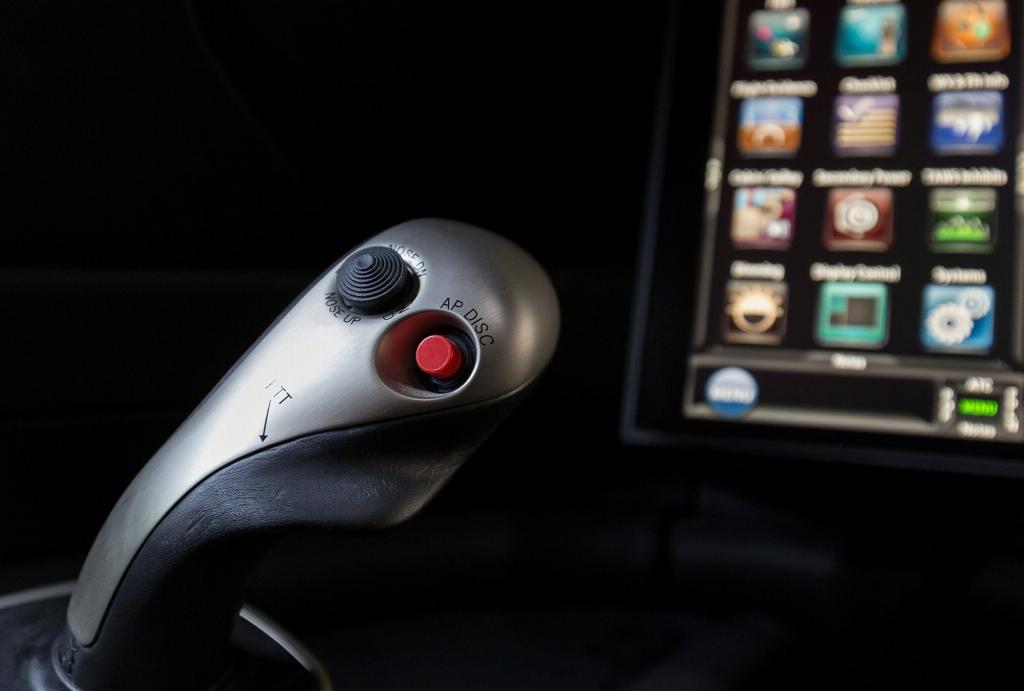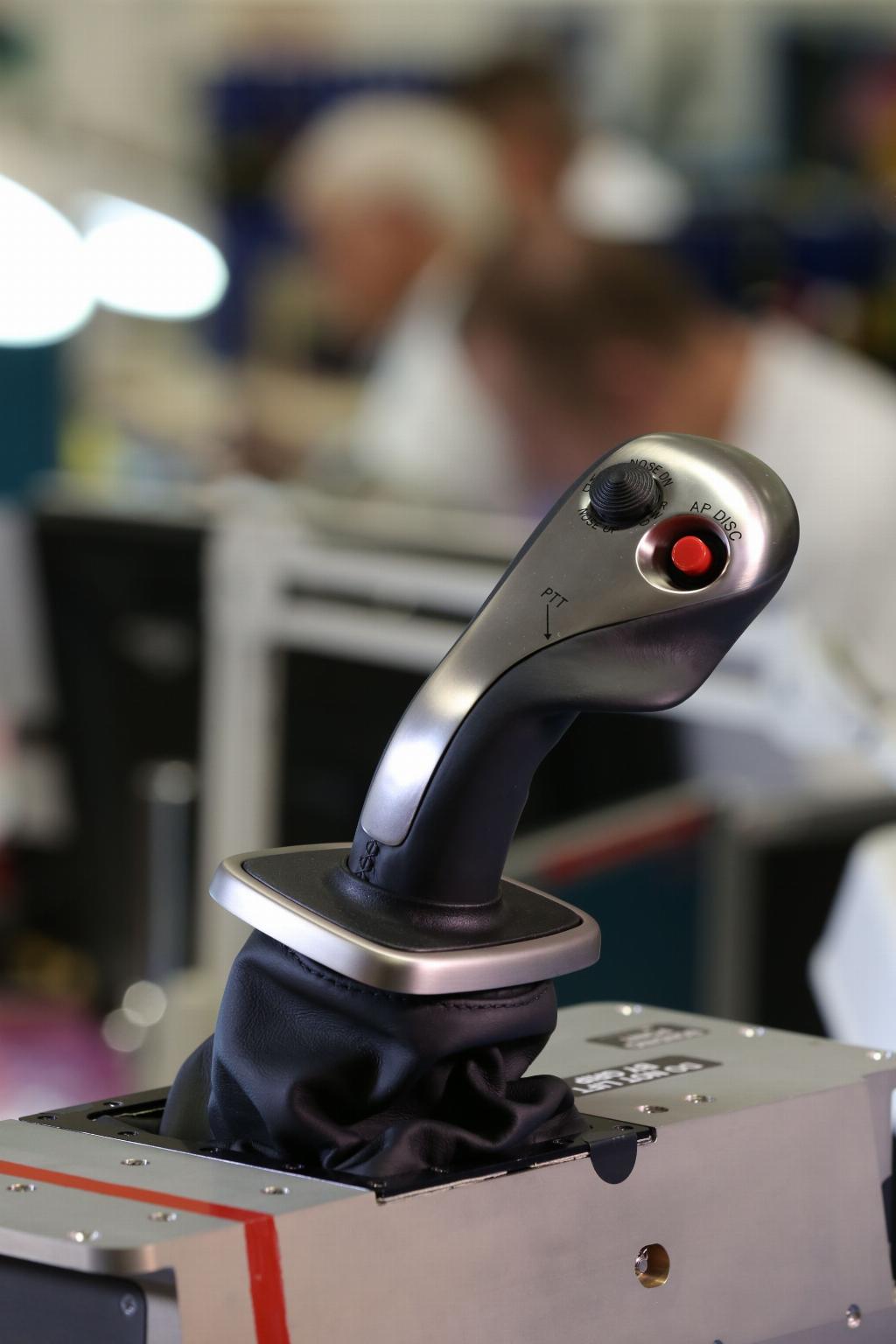Taking control to the next level

Adam Taylor, director of business development and capability for Active Inceptor Systems at BAE Systems, discusses with Ed Hill the benefits of adapting Active Stick control technology from military to civil aircraft cockpit applications.
Active Inceptor, or Active Stick technology as it’s also referred to, has its roots in the development of the Joint Strike Fighter (F-35) programme. As the multi-role aircraft makes greater demands on the pilot, and also contains many advanced weapon, navigation and communication systems, it became clear that anything that could help to reduce the pilot’s workload flying the aircraft would be highly beneficial – if not vital.
Adam Taylor, director of business development and capability for Active Inceptor Systems at BAE Systems, explains: “Because of the unique CONOPS (concept of operations) of that aircraft, the need for an active stick and active throttle is higher than on other fighters. It is used to give tactile warnings to the pilot for pitch and roll manoeuvres, but in the fighter scenario it is used as much for the throttle control as it is for stick control.”

Unlike a passive stick, active inceptors have electronically controlled actuators that send tactile feedback, or cues, to the pilot through the stick. The feedback is programmable for specific aircraft depending on customer requirements, and can warn pilots of impending structural or aerodynamic operating limits.
Simultaneously to the work on the Joint Strike Fighter programme, the system was seen as equally beneficial for military helicopter pilots and it has also been fitted to the Sikorsky CH-53K King Stallion heavy lift helicopter and the latest model of the Chinook. In fact, active inceptor technology can now be found on seven different commercial and military aircraft platforms.
“In the F-35 scenario it is focused on producing tactile cues because there is only one pilot. Active stick technology provides cues in real-time, aiding the pilot’s ability to fly the mission, reduce their workload and carry out other tasks when they are needed. It also gives the pilot an indication that they have reached a flight envelope limitation but allows them to go beyond that if they really have to. This is important for fighter pilots who need cues like this, but don’t want a system that limits what they can do.
“Moreover, active inceptors prevent the pilot over-stressing the aircraft. For example, on a helicopter Collective control, one of the primary cues is to stop the pilot over-torqueing the rotor head and causing mechanical damage. On the F-35, although the aircraft is very different, the functions of the system end up producing similar benefits. By flying these aircraft correctly within their limits, you are extending airframe life which is clearly desirable to keep aircraft in service.”
Linked in flying
After developing the system for the twin seat KAI T50 military trainer, BAE Systems engineers realised that it could also have major benefits for commercial applications. The ability to link the pilot and co-pilot’s controls so each can see and feel the other’s inputs in real time is evidently beneficial.

“With commercial aircraft applications, the biggest advantage is the ability to link the two sticks rather than the tactile cueing. The situational awareness of both pilots is hugely improved by active stick technology. Active inceptors provide force feedback from one pilot to another, so they can literally feel how each other is flying.”
A recent milestone for the system was its certification on Gulfstream’s G500 and G600 business jets. In this case a major driver was that it enabled Gulfstream to opt for a side stick cockpit configuration allowing them to free up space, provide a more ergonomic environment for pilots, and further enhance pilot to pilot thinking. Gulfstream describe this as its ‘Symmetry Cockpit’. It meant the aircraft OEM could discard traditional column and wheel (yoke) pilot controls that are bulky, can obscure cockpit instrument displays, and require heavier linkage and rigging systems, to provide a better ‘office’ space for pilots.
Dependable technology
BAE Systems has a well-earned legacy in electronic flight control systems. Indeed, the company was the first to develop a primary fly-by-wire system for the Boeing 777. With this background the company was able to apply its expertise when it came to developing active inceptors, which have to be totally reliable.
“Not surprisingly, there is a lot of interconnectivity and shared technology between a primary flight control system and an active stick. The active stick is inputting signals into the primary flight control with processing technologies that have multiple redundancy included, very similar to a flight control system.
“There is also a tremendous amount of redundancy management technology used with an active stick with multiple Quadruplex sensors to help monitor and counter any system failures. Additionally, the processing elements have multiple redundancy designed into them too. If you do get a common fault you have dissimilar processing elements within the stick that can counteract a failure.
“At the same time, the linkage between the sticks to the flight controls is actually fairly conventional. We use analogue variable differential transducers (VDT) from the two stick’s actual position to output to the primary flight control, the same as it would be with a passive stick.
“An additional element of the active stick system is that there is a two-way, Arinc 429 standard interface between the stick and the flight control computer, so data is sent back and forth between the two. It’s a much more intelligent system because the active stick can provide data about its own performance as well.”

So, what has been the result of the adoption of the technology for the new Gulfstream aircraft?
“Gulfstream’s own test pilots said that when they first demonstrated the technology to their customers, within an hour or so of using it they could see the advantages. The handling qualities of their latest series of jets is improved compared to a column and wheel control, and of course, operationally a major benefit is the reduction in weight that it provides for the aircraft. A column and wheel system can be pretty heavy with all the necessary assemblies and it takes up a lot of volume; and that all requires a higher degree of maintenance. By adopting active sticks Gulfstream has saved weight and fuel consumption, produced a more modern cockpit layout and reduced through life maintenance costs.”
And BAE Systems is still working on further improvements, particularly as electronic components continue to reduce in size.
“The latest PCBs are smaller now than when we first developed the stick for the F-35,” Taylor concludes. “The commercial stick is now the 5th generation of active inceptor technology. We could not pack the electronics of the original stick in the latest version. Consequently, we can continue to take advantage of the development of smaller and lighter electronics. Likewise, the adoption of the technology by Gulfstream has attracted a lot of interest from the industry, so it would be great to see it used on other platforms.”












